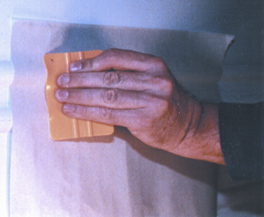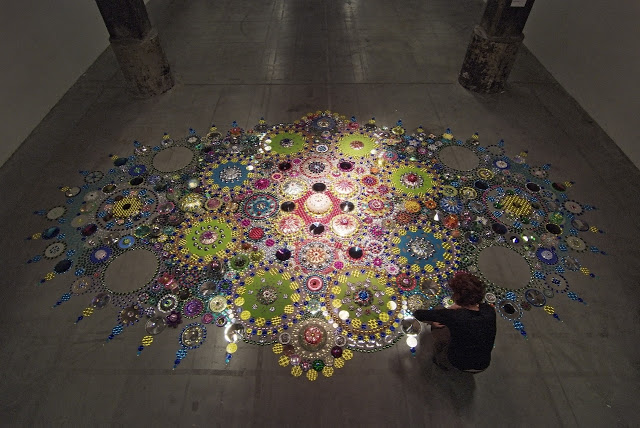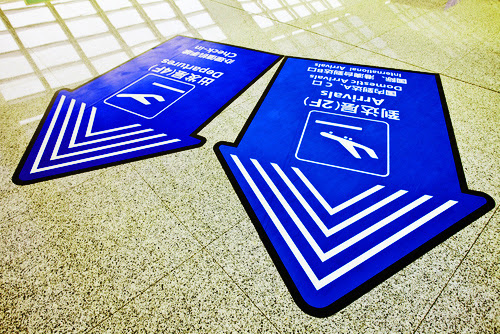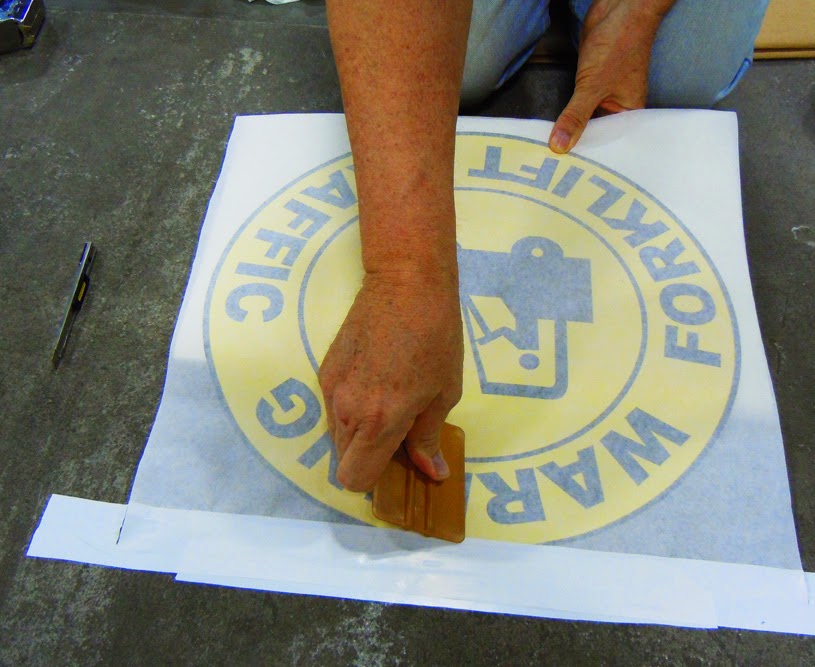Floor Graphics Represent a $2 Billion Market for the Sign and Point-Of-Purchase Industries. Jim Hingst Explains the Opportunities, Material Requirements and Application Techniques…
The Growing Market For Floor Graphic Applications
Why Floor Graphics Are Effective
Other Markets for Floor Graphics
Floor Graphics Materials
Overlaminates for Floor Graphics
Link to Vinyl Application Videos
Applying Floor Graphics
Installing floor graphics is similar to installing other pressure-sensitive, vinyl material. Prior to application, inspect floors for broken or loose tiles and uneven surfaces. To ensure good adhesion, floors must be cleaned using a commercial floor cleaner, such as a citrus-based product. Grease and tar can be removed with rubbing alcohol. Before the solvent evaporates, wipe the floor dry with a clean, lint-free cloth to prevent residue that could affect adhesion.
Use common sense when positioning the graphic. Although today’s overlaminates are durable, they won’t withstand continuous forklift and heavy-equipment traffic. In addition, graphics shouldn’t be installed in areas that may get wet, such as in an entranceway. While overlaminates must meet slip-resistance standards, wet graphics can become hazardously slick.
Floor-graphics applications should always be applied dry; never use application fluid. To prevent edge lifting, always squeegee the graphics’ edges twice. Following the installation, wax the graphics and floor surface to seal the edges and prevent moisture from seeping between the graphic’s layers and floor surface.
Visit My Vinyl Sign Techniques Community
CLICK HERE FOR HINGST SIGN POST ARTICLES IN PDF FORMAT
 Vinyl Application Videos
Vinyl Application Videos
Squeegee Technique. Nothing is more basic in vinyl application than the squeegee. But some squeegees work better than others. And there are right ways and wrong ways to use this simple tool. This video clip reviews squeegee selection, squeegee care and squeegee technique. Click to Link
Wet Applications. Dry applications are typically recommended for most vinyl applications. For those exceptions to the rule, this instructional video explains the right way to perform a wet application. Click to Link
Application of Window Graphics. Installing vinyl graphics on glass can be challenging, because the adhesive aggressively grabs onto this high energy surface. Repositioning graphics on window is generally difficult, if not impossible. This instructional video explains how to dry apply window graphics right the first time. It also describes the necessary steps required for surface preparation. Click to Link
Transferring Frosted Window Graphics Films. Because frosted window films are highly textured, transferring cut vinyl graphics can be problematic. This video provides direction in selection of the right application tape and how to apply these films quickly, easily and without problems. Click to Link
3-Step Surface Prep. This instructional video describes how to properly clean the surface of a vehicle before applying pressure sensitive vinyl graphics to a trailer or doing a full wrap of a car or van. This three step surface prep involves detergent washing, solvent cleaning and a final wipe down with IPA. Click to Link
Vinyl Application Over Rivets. Applying vinyl graphics on vehicle surfaces with rivets is challenging for most sign makers. Vinyl failures to these surfaces are all too common. This video demonstrates some tips and procedures, used by professional decal installers, which will make these demanding applications easier and more trouble-free. Click to Link
Vinyl Application to Corrugations. Learn how to apply vinyl graphics to corrugations in a relaxed state. Forcing films into the valleys of corrugations puts too much mechanical stress on the film. Sooner or later, the vinyl will lift or tent in valleys. Click to Link
Applying Air Egress Vinyls. Vinyl films with air egress release liners have almost eliminated bubbles and wrinkles from applied graphics. Air egress release liners with their highly textured surface structure are problematic. Not much will stick to these liners other than the vinyl film. At RTape our best premask solution for air egress liners is a special Conform® tape called 4761RLA. Click to Link






